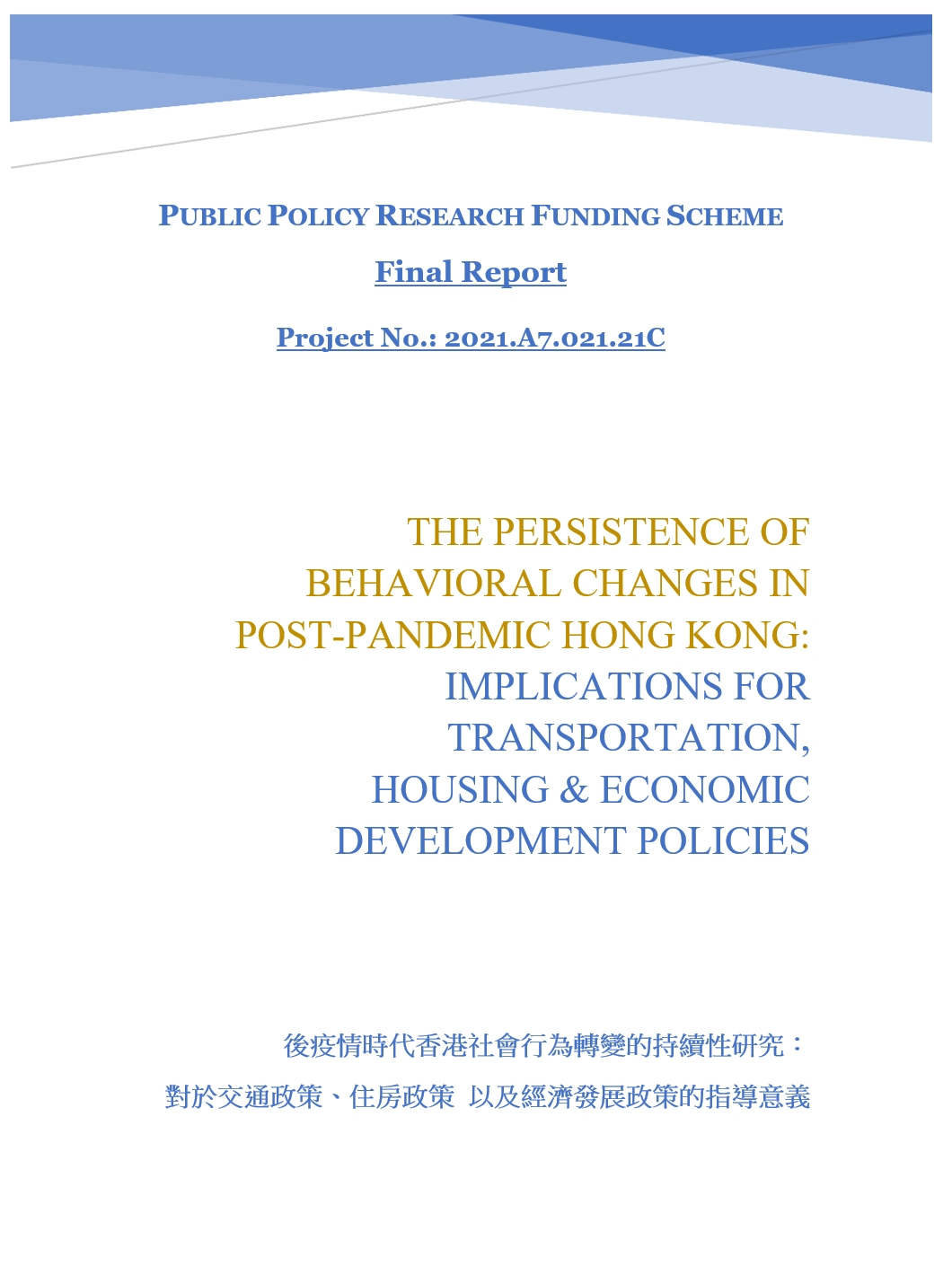


This research report is uploaded onto the webpage of the Public Policy Research Funding Scheme and Strategic Public Policy Research Funding Scheme for public reference.
Link: https://www.cepu.gov.hk/doc/en/research_report(PDF)/2021.A7.021.21C_Final%20Report_Prof%20Zhu.pdf
Summary:
The global scourge of the COVID-19 pandemic has vastly reshaped everyday behavior, possibly in enduring ways. If they persist, behaviors popularized by the pandemic, such as working from home and online shopping, may impact economic development and urban policies in the years to come. Such behaviors could, for instance, boost the growth of more peripheral locations and reduce the tendency towards concentrated growth in central city areas. Thus, they could theoretically depress home prices in dense urban areas. Meanwhile, such behaviors could also have deleterious effects on the traditional retail sector while spurring growth in the e-commerce and delivery service sectors. Understanding these changes and the likelihood of the persistence of different behaviors in the wake of the pandemic can contribute to more informed policymaking in economic development, transportation, housing, and other relevant areas to meet the needs of a post-pandemic era.
To aid in this understanding, this study utilizes the survey infrastructure of the Hong Kong Panel Study of Social Dynamics (HKPSSD) to conduct a timely population-representative survey of Hong Kong households as the pandemic recedes, collecting data on behavioral patterns before, during, and immediately after the pandemic. Based on the survey results, we explore the following four research topics:
- Descriptive statistics: Examine the return of COVID-19-affected behaviors to pre-pandemic norms over an 18-month period through surveys and empirical data collection.
- Behavioral Change Analysis: Investigate the reasons for behavioral changes during and after COVID-19, focusing on the mediating effects of economic circumstances, access to technology, shifts in attitudes and values, and stress levels.
- Predictive Modeling: Utilize a model to forecast the likelihood of the persistence of these behavioral changes based on observed patterns and the impact of various intervening variables.
- Demographic Variability: Analyze how the persistence of these behaviors varies across different population segments.
Our key findings include: 1) the prevalence of teleworking, although not as expected, is forecast to remain significantly higher in the future than it was before the pandemic, especially for the highly educated and high-income groups; 2) the transportation choices of Hong Kong residents remained relatively stable in the pre-pandemic, mid- and post-pandemic periods, with public transportation remaining the most important mode, with lower-income groups choosing to walk more often at the peak of the pandemic, while higher-income groups are more likely to use private cars; 3) dine-in behaviors are still in the process of recovering, with pick-ups and take-aways becoming the alternative, and are expected to become the new normal; and 4) online shopping and e-payments will continue to grow in the post-pandemic period.